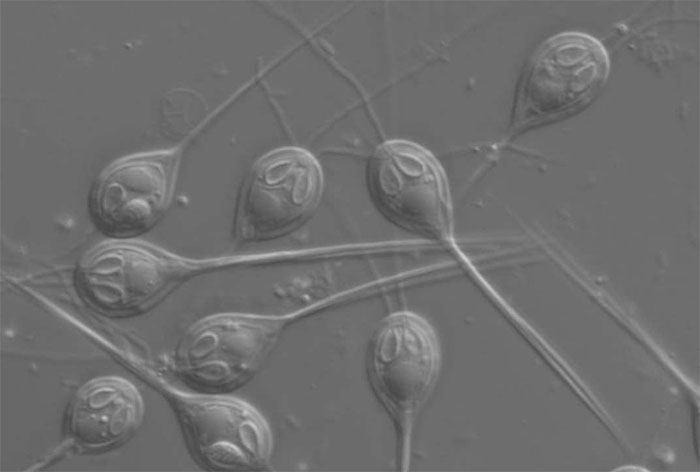Find the first creature that doesn't need oxygen to survive
Scientists have discovered a jellyfish-like parasite that does not have a mitochondrial genome. That means he doesn't breathe and lives a life completely free of oxygen.
This discovery is particularly important because it not only changes our understanding of how life can work on Earth, it can also be important for the search for extraterrestrial life. .

Henneguya salminicola is a multicellular organism that does not require oxygen to survive
Every cell in our body except for red blood cells has a large number of mitochondria, which break down oxygen to create a molecule called adenosine triphosphate (ATP) - an energy-carrying molecule. energy transport to places needed for cell use. These are essential for respiration.
We still know there are adjustments that allow some organisms to thrive in the absence of oxygen. Some unicellular organisms have evolved mitochondrial-related organelles to metabolize in the absence of oxygen, but the ability of multicellular organisms to transform without sufficient oxygen is the subject of Some scientific debate.
The problem seemed to have an answer until a team of researchers led by Dayana Yahalomi of Tel Aviv University in Israel decided to reconsider a salmon parasite called Henneguya salminicola .
This parasite has been identified as related to corals, jellyfish and anemones. Although the cysts it produces in fish meat are hard to see, the parasite is harmless and will live with salmon throughout its life cycle.
Henneguya salminicola Henneguya salminicola can survive in anoxic conditions. But exactly how difficult it is to know without determining the DNA of the organism. So the researchers looked closely at this and discovered that Henneguya salminicola does not have a mitochondrial genome. In addition, it also loses respiration requiring oxygen and nearly all nuclear genes involved in mitochondrial replication.
Like protozoa, Henneguya salminicola evolved organelles related to mitochondria, but they are also unusual. They have folds in the inner membrane that are often not seen.
The results of the study clearly show that Henneguya salminicola is a multicellular organism that does not need oxygen to survive. But exactly how it survives remains a mystery. It can take adenosine triphosphate from its host, but that has not been determined.
Over the years, they have essentially transformed from a jellyfish-like ancestor into the much simpler parasite we see today. They have also lost most of the ancient jellyfish genome, but retain a complex jellyfish-like structure. They are not used to cling to hosts.
"Our findings confirm that anaerobic adaptation is not unique to single-celled eukaryotes, but has evolved in a multicellular parasite , " researchers said. emphasize.
- Find the deepest living animals
- Multicellular organisms could exist before the Cambrian period
- The reason why East African mole rats can survive for 20 minutes without oxygen
- Most creatures on Earth disappeared 2 billion years ago
- Terrible data about dead seas on the oceans
- Interesting secrets about oxygen
- Oxygen appeared early on Earth
- Discover the most lonely creature on the planet
- Where does the oxygen for the oxygen mask really come from?
- Video: What happens if the Earth loses oxygen in 5 seconds?
- What happens if we breathe twice as much oxygen now?
- Unprotected creatures still survive in the universe
- There is a single-celled creature that has the power to change the world
- Sky geese can fly in poor oxygen conditions
 'Fine laughs' - Scary and painful torture in ancient times
'Fine laughs' - Scary and painful torture in ancient times The sequence of numbers 142857 of the Egyptian pyramids is known as the strangest number in the world - Why?
The sequence of numbers 142857 of the Egyptian pyramids is known as the strangest number in the world - Why? History of the iron
History of the iron What is alum?
What is alum?